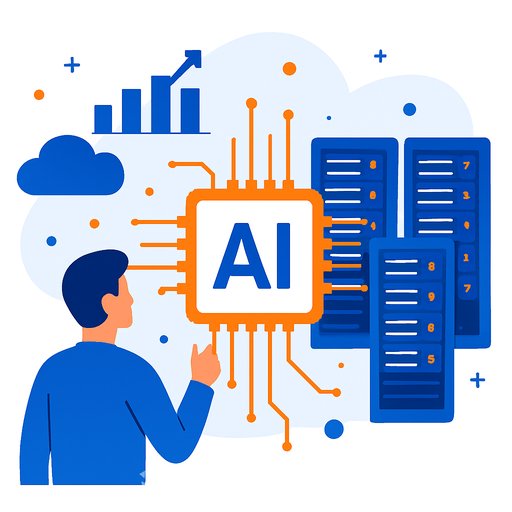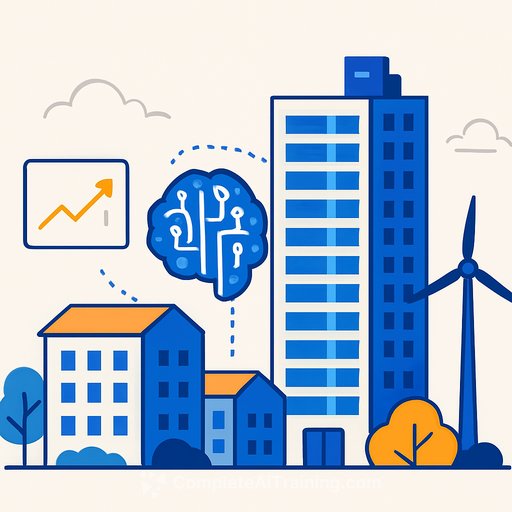AI data centre rush puts cooling and power supply chains under strain
Developers are pivoting hard to AI-ready facilities, but the supply chain isn't keeping pace. According to Turner & Townsend's 2025-2026 Data Centre Construction Cost Index, 83% of industry experts say supply chains are not ready to deliver the advanced cooling required for AI workloads. Nearly half (48%) also flag power availability as the biggest risk to schedule.
2025 is the inflection point. The focus is shifting from traditional, air-cooled cloud facilities to high-density, liquid-cooled builds. In hot climates such as Saudi Arabia, direct-to-chip and other liquid systems are becoming essential to hit performance and sustainability targets.
What's changing on the build side
AI racks pack higher power density, driving more heat per square metre and far tighter tolerances. That means early decisions on liquid cooling topology (direct-to-chip, immersion, or rear-door heat exchangers), upgraded electrical distribution, and robust commissioning plans. The report also notes a 7-10% cost premium for AI-ready data centres versus traditional projects of similar IT capacity.
Power remains the main constraint. Grid access, transformer lead times, and utility approvals are pushing programmes. Owners are assessing on-site generation, renewables, and battery storage to de-risk delivery and operations.
Costs: Middle East stays competitive
The Middle East continues to price well against global peers on a per-watt basis. The index benchmarks Saudi Arabia at $11.3/W (18th most expensive globally) and the UAE at $9.2/W (46th). Tokyo and Singapore top the table at $15.2/W and $14.5/W respectively.
Globally, cost escalation has cooled. Average construction cost inflation for traditional cloud data centres is 5.5% in 2025, down from 9.0% in 2024. AI-ready projects still carry a premium due to specialized cooling, higher electrical capacity, and commissioning complexity.
Middle East pipeline is accelerating
Regional capacity is expected to grow from 1.2 GW this year to 3.3 GW by 2030, driven by hyperscale demand, tighter regulation, rising investment, and the surge in AI workloads. Major programmes include Khazna's AI-ready rollout, du's hyperscale facility in the UAE, and HUMAIN's plan to add 1.9 GW of capacity by 2030 with support from Saudi Arabia's Public Investment Fund.
"The Middle East is emerging as a global digital infrastructure powerhouse, with data centres driving ambitions in AI, cloud and digital sovereignty," said Alan Coary, Data Centre Lead, Middle East, at Turner & Townsend. "Saudi Arabia and the UAE are driving this transformation with government-led initiatives and robust regulatory frameworks accelerating expansion."
He added that the Kingdom is targeting 6.6 GW of AI computing capacity by 2034, while the UAE is pushing ahead with projects like Moro Hub's solar-powered data centre and Stargate UAE in Abu Dhabi.
Budget pressure and delivery risk
Inflation of around 5% in Riyadh, Dubai, and Abu Dhabi during 2025 points to rising budget pressure as demand grows. Escalation continues to be driven by labour shortages, supply constraints, and a busy pipeline. The outlook improves in 2026, but procurement risk will remain a factor for core equipment and specialist trades.
Practical moves for owners, developers, and contractors
- Lock the cooling strategy early: pick liquid cooling topology, define rack densities, and design MEP around those choices to avoid rework.
- Prequalify specialist OEMs and installers: secure capacity for heat exchangers, pumps, CDUs, high-capacity PDUs, MV gear, and backup systems.
- Front-load power: run grid studies early; pursue dual feeds where viable; plan for temporary power, on-site generation, and BESS to protect schedules.
- Modularize: use factory-built power and cooling skids, standardize rooms, and phase IT halls to bring capacity online faster.
- Source locally where possible: shorten lead times for steel, cable, containment, and prefab assemblies; qualify regional vendors for repeatability.
- Design for heat and water: in hot climates, prioritize efficient liquid systems and low-WUE strategies; assess water reuse and dry-cooling options.
- Get commissioning right: build integrated test plans for liquid loops, controls, and electrical selectivity; budget time for integrated systems testing.
- Control cost creep: hedge key commodities, set escalation clauses, and maintain a live risk register tied to procurement milestones.
- Plan the workforce: secure specialist trades, upskill supervisors on liquid cooling methods and AI-era EHS risks, and align shift patterns to hit drops.
What to expect through 2026
Expect more AI-ready designs, tighter utility interfaces, and deeper owner-operator involvement in early design. Costs should be more predictable than 2024, but AI projects will keep a price premium and longer critical-path items. Teams that standardize designs, modularize, and lock suppliers early will protect both budget and schedule.
Sources and further reading
For the full methodology and market-by-market detail, see Turner & Townsend's Data Centre insights here.
If you're upgrading team skills for AI-enabled workflows in planning, PMO, or operations, explore job-focused learning paths at Complete AI Training.
Your membership also unlocks:






